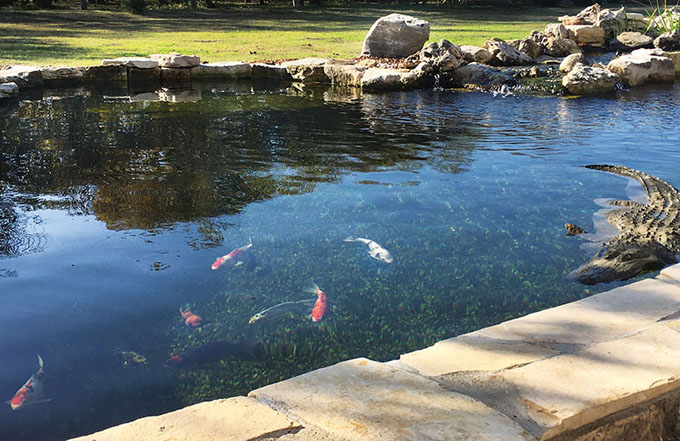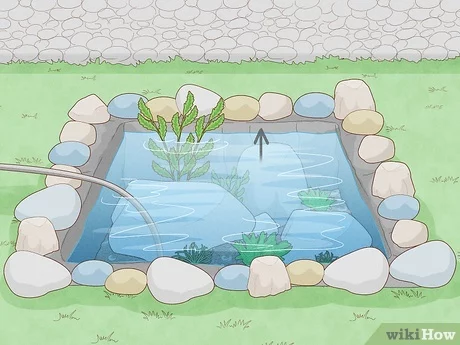Keeping a pond clean is essential for maintaining a healthy ecosystem for aquatic life and enhancing the overall aesthetics of your outdoor space. By following a few simple steps and implementing regular maintenance practices, you can ensure that your pond remains clean and beautiful year-round.

Credit: www.pondtrademag.com
1. Install a Skimmer
One of the most effective ways to keep your pond clean is by installing a skimmer. A skimmer helps to remove debris such as leaves, twigs, and other floating particles from the surface of the water before they have a chance to sink to the bottom and decompose. This not only helps to keep the water clear but also reduces the amount of organic matter that can contribute to algae growth.

Credit: www.wikihow.com
2. Use a Pond Vacuum
Regularly vacuuming the bottom of your pond is another important maintenance task that can help keep your pond clean. A pond vacuum can help to remove sludge, debris, and other organic matter that has settled on the bottom of the pond. By removing this waste, you can prevent the buildup of nutrients that can fuel algae growth and lead to water quality issues.
3. Add Aquatic Plants
Adding aquatic plants to your pond can also help to keep the water clean and clear. Plants such as water lilies, water hyacinth, and duckweed not only add beauty to your pond but also help to absorb excess nutrients from the water, thereby reducing the likelihood of algae blooms. Additionally, plants provide shelter and food for fish and other aquatic creatures, creating a balanced ecosystem.
4. Use Beneficial Bacteria
Beneficial bacteria are essential for maintaining a healthy pond ecosystem. These bacteria help to break down organic matter such as fish waste, uneaten fish food, and decaying plant material, converting it into harmless byproducts. By adding beneficial bacteria to your pond on a regular basis, you can help to keep the water clean and reduce the risk of water quality issues.
5. Monitor Water Quality
Regularly monitoring the water quality of your pond is crucial for ensuring that it remains clean and healthy. Test the water for pH, ammonia, nitrites, and nitrates on a regular basis and make adjustments as needed to maintain optimal water conditions. Keeping the water quality in check can help prevent algae outbreaks and ensure the health of your fish and plants.
6. Install a Filtration System
Consider installing a filtration system in your pond to help keep the water clean and clear. Filtration systems can help remove debris, excess nutrients, and other impurities from the water, improving overall water quality. There are different types of filtration systems available, including mechanical, biological, and UV filters, so choose one that best suits the size and needs of your pond.
7. Regularly Remove Algae
Algae growth is a common issue in ponds, but it can be managed with regular maintenance. Use a pond skimmer or algae scraper to remove excess algae from the water surface and walls of the pond. By keeping algae in check, you can prevent it from overtaking the pond and ensure that the water remains clean and clear.
8. Avoid Overfeeding Fish
Overfeeding fish can lead to excess fish waste and uneaten food, which can contribute to poor water quality and algae growth. Feed your fish sparingly and only as much as they can consume in a few minutes. By avoiding overfeeding, you can help maintain a healthy pond environment and reduce the need for excessive cleaning and maintenance.
9. Maintain Proper Water Levels
Ensure that the water levels in your pond are maintained at the appropriate level to promote good water circulation and aeration. Low water levels can lead to stagnant water, poor oxygenation, and increased nutrient buildup, which can create an ideal environment for algae growth. Regularly top up your pond with fresh water to ensure optimal water levels.
10. Perform Regular Inspections
Regularly inspect your pond for any signs of leaks, damage, or other issues that could impact water quality and cleanliness. Check the pond liner, pumps, filters, and other equipment to ensure that everything is in good working order. By addressing any problems promptly, you can prevent larger issues from arising and keep your pond clean and well-maintained.
Conclusion
By following these tips and incorporating regular maintenance practices into your routine, you can keep your pond clean, clear, and healthy. A clean pond not only enhances the beauty of your outdoor space but also provides a safe and thriving habitat for fish, plants, and other aquatic life. With proper care and attention, you can enjoy a beautiful and pristine pond for years to come.


